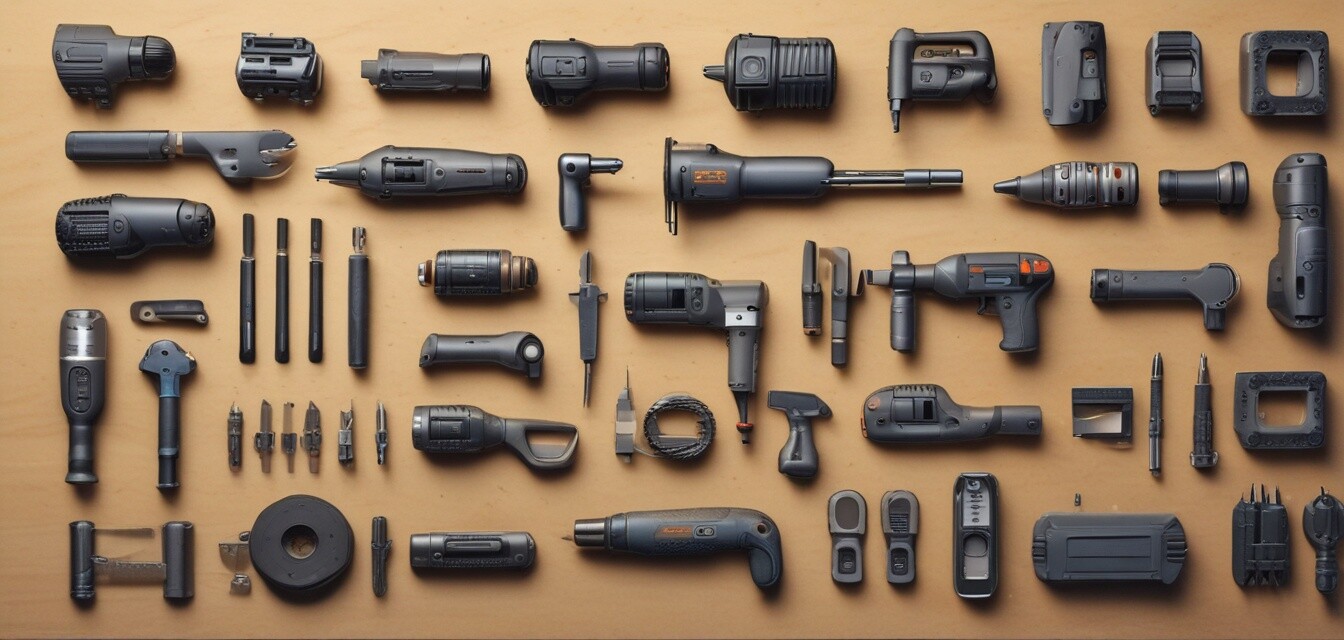
Trends in Tool Connectivity for 2025
Key Takeaways
- Increased integration of smart technologies in power tools.
- Improved connectivity options for enhanced usability.
- Real-time monitoring and analytics tailored for contractors and DIY enthusiasts.
- Growing importance of app integrations for managing tools.
- Enhanced safety features through connectivity advancements.
The world of power tools is rapidly evolving, and connectivity is at the forefront of this progression. As we look ahead to 2025, several trends are expected to reshape how contractors and DIY enthusiasts interact with their tools. In this article, we will analyze these trends in detail, focusing on how they impact usability and the overall user experience.
1. Rise of smart technology
Smart technology is becoming a standard feature in portable power tools. This trend includes the integration of IoT (Internet of Things) functionalities that allow tools to connect with user devices and cloud services. Users will benefit from tools that can provide real-time feedback and diagnostic information, which enhances both usability and safety.
Examples of smart technology features
- Automatic RPM adjustments based on material type.
- Battery life status notifications sent to mobile devices.
- Maintenance alerts for optimal tool performance.
2. Enhanced connectivity options
As we look towards 2025, improved connectivity options are a key trend. Tools are expected to integrate with multiple connectivity protocols, such as Bluetooth, Wi-Fi, and even Zigbee. This will facilitate seamless communication between tools and other devices, enhancing user interaction.
| Connectivity Type | Benefits | Drawbacks |
|---|---|---|
| Bluetooth | Low power consumption and easy pairing. | Limited range. |
| Wi-Fi | High speed and ability to connect multiple devices. | Higher power consumption and potential connectivity issues in remote areas. |
| Zigbee | Low power usage with the ability for mesh networks. | Less widespread and requires compatible devices. |
3. Real-time monitoring and analytics
Another exciting trend is the development of real-time monitoring capabilities for portable power tools. By utilizing sensors and connectivity features, contractors can monitor performance metrics directly from their smartphones or tablets. This includes data on tool efficiency, usage patterns, and maintenance needs.
- Tracking tool utilization to manage inventory effectively.
- Performance data to identify areas for improvement.
- Alerts for upcoming maintenance to reduce downtime.
4. App integrations
Mobile application integration is gaining traction in the power tool industry. Many manufacturers are creating proprietary apps that allow users to control and monitor their tools remotely. This trend is not only about convenience but also expands the functionality of the tools themselves.
Features of tool management apps
- Tool settings customization for different tasks.
- Resource management for multiple tools.
- Social features for users to share their projects and connect.
5. Safety enhancements
As connectivity evolves, safety features will become more sophisticated. Tools will integrate real-time safety alerts based on their operational status and the environment. For example, a tool may alert the user if it detects unsafe conditions based on sensor data.
Pros
- Improved user experience through customized settings.
- Enhanced safety features that protect users.
- Real-time performance analytics lead to better decision-making.
Cons
- Potential for increased costs with advanced technologies.
- Reliance on app functionality may deter less tech-savvy users.
- Connectivity issues could affect tool performance in remote areas.
Conclusion
As we move towards 2025, the integration of connectivity features in portable power tools is a pivotal trend. Smart technology, enhanced connectivity options, real-time monitoring, app integrations, and improved safety measures are just some of the ways that these tools are becoming more user-friendly and effective for contractors and DIY enthusiasts. Staying updated on these trends will be crucial for anyone looking to invest in the latest tools in the market. For more insights, check out our News and Trends section and stay ahead in the industry!
